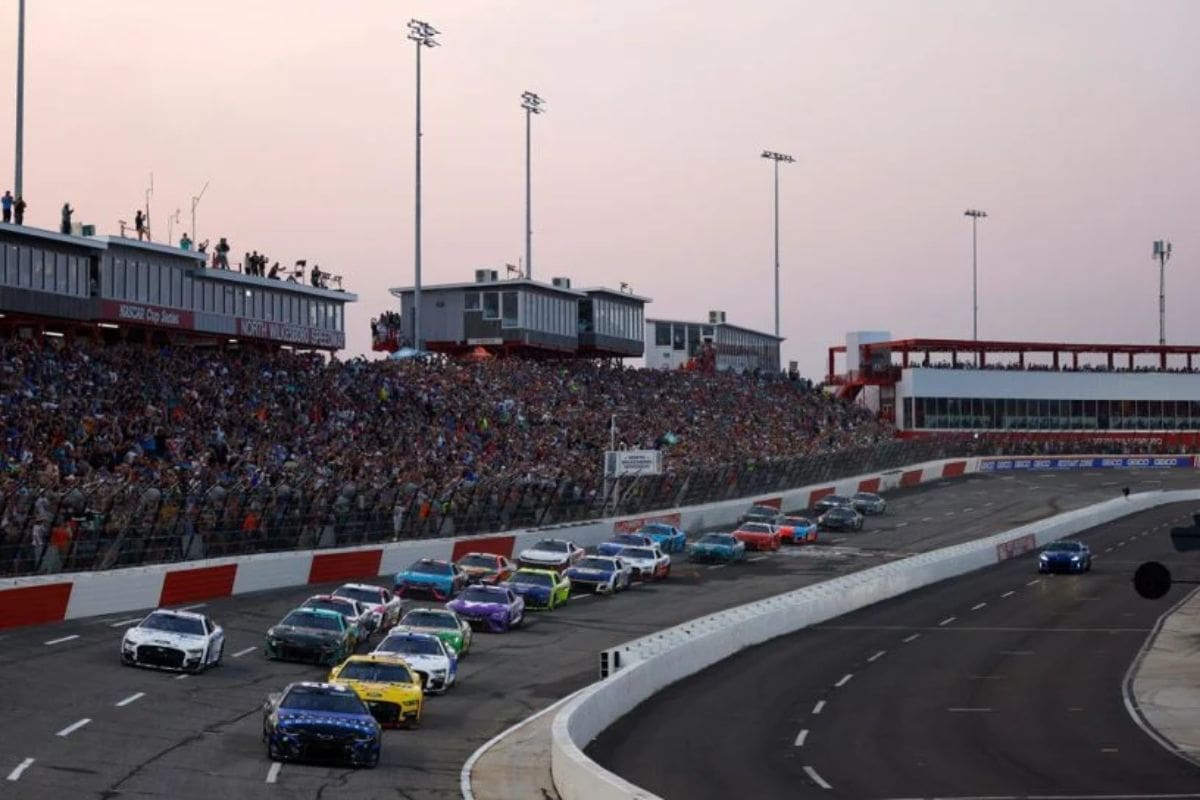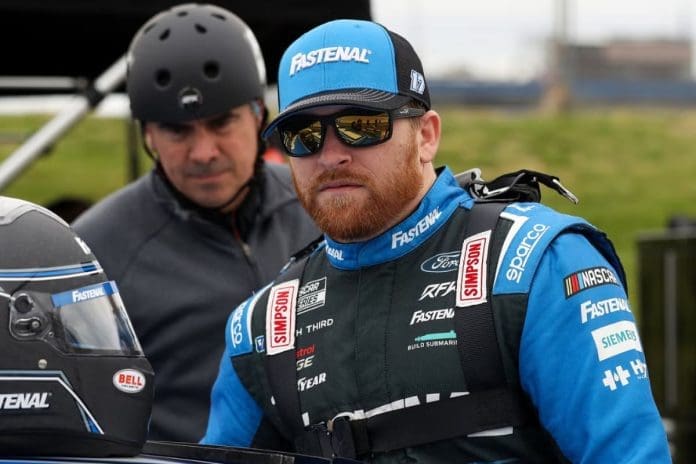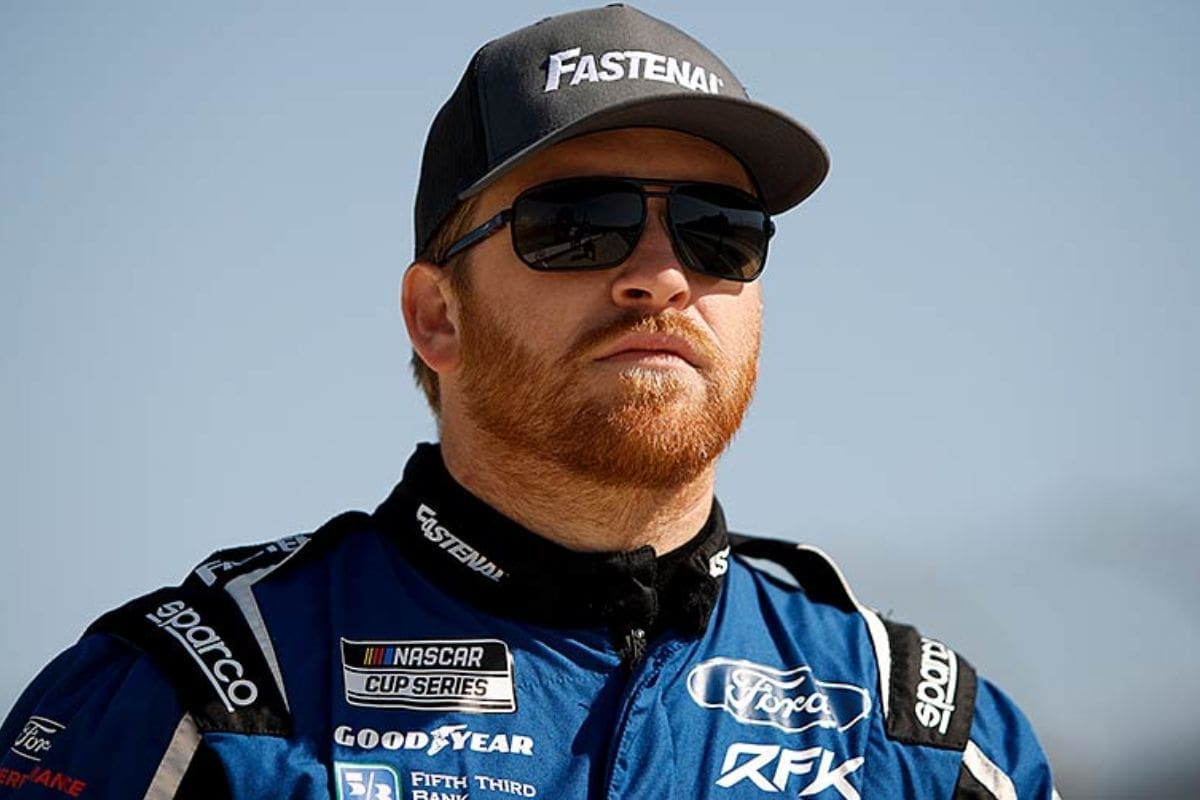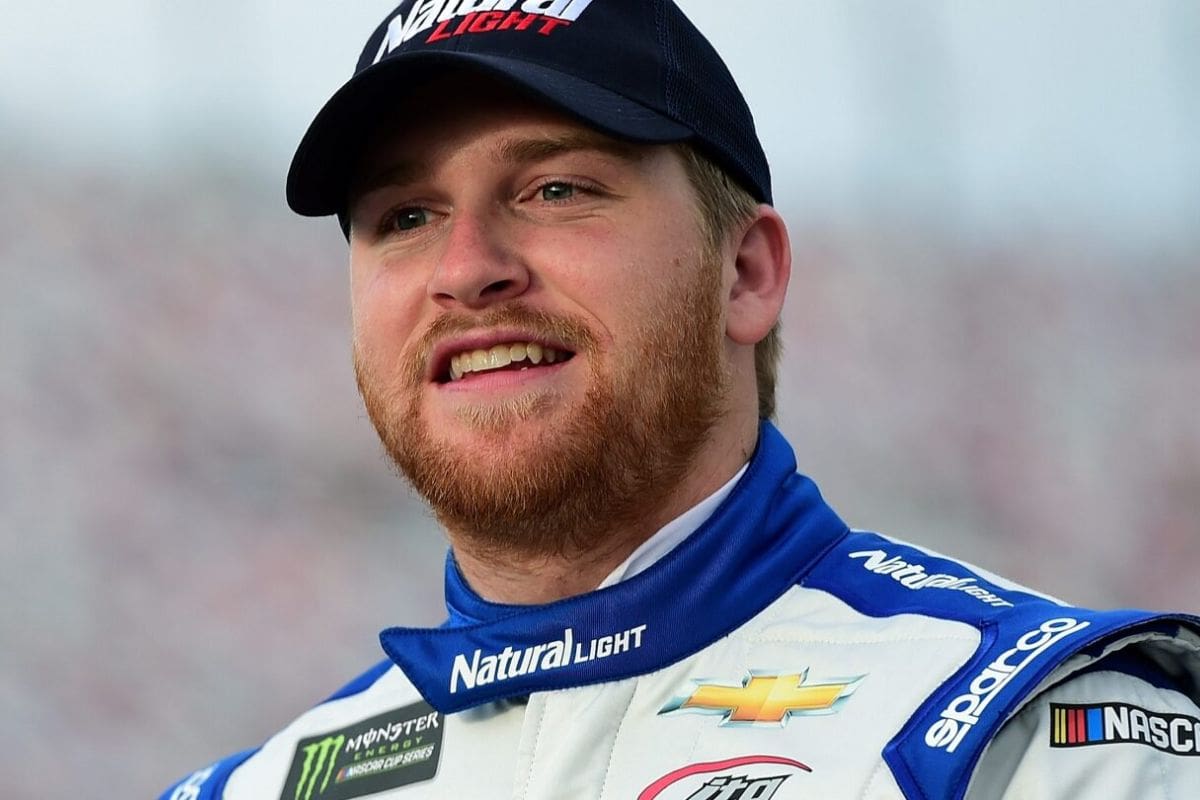Chris Buescher Expresses Disappointment: Chris Buescher‘s recent expression of disappointment over the limited data on Goodyear’s new ‘options’ tire has sparked an important conversation within the NASCAR community. The introduction of this tire at the All-Star Race was intended to improve competition, yet the scarcity of performance data has left drivers like Buescher in a risky position. This lack of information raises pressing questions about risk management and strategic decision-making on the track. As teams grapple with these uncertainties, the broader implications for future races loom large, urging a closer examination of how this new variable could redefine competitive dynamics.
Key Highlights
- Chris Buescher expressed concerns about limited data on the new Goodyear option tires.
- The lack of comprehensive data on tire performance creates strategic uncertainties for drivers.
- Buescher highlights the challenges posed by the new tire’s unknown variables.
- Limited testing data impacts confidence in tire reliability and race strategy.
- Buescher emphasized the need for more extensive data to optimize tire use.
NASCAR’s Initiative to Improve Racing at North Wilkesboro Speedway
Recognizing the need for more dynamic racing at North Wilkesboro Speedway, NASCAR has initiated a plan to enhance the performance of their short track packages by introducing a new tire during the non-points All-Star Race. This strategic move addresses a critical issue—insufficient tire wear—which has been identified as a major factor diminishing the excitement of races at this historic venue. By selecting the All-Star Race, NASCAR aims to test the efficacy of this new tire in a controlled, yet competitive environment, thereby gathering valuable data without impacting the championship standings.
The decision highlights NASCAR’s commitment to enhancing the spectator experience and reviving the thrill of short track racing. North Wilkesboro Speedway, with its rich heritage and unique characteristics, offers the ideal testing ground for such innovations. The track’s abrasive surface is notorious for challenging tires, making it an excellent candidate for evaluating the wear and performance of this new tire compound.
NASCAR’s proactive approach demonstrates an understanding of the intricate balance required in race engineering—where tire wear directly influences race strategy, driver skill, and overall competition. By addressing the core issue of tire performance, NASCAR hopes to reinvigorate the racing dynamics, ensuring that drivers face more significant challenges and that races are more unpredictable and engaging for fans.

Introduction of the “Option” Tires
The event included two exciting heat races and a 200-lap main event. Since there were no championship points at stake, Goodyear decided to test a red “option” tire to add excitement to the short tracks.
“It just seemed like this is a good opportunity to see if maybe this is a solution, add something of that risk-and-reward element that’ll improve the overall racing.” – (Greg Stucker)
- Highlight Performance: The red ‘option’ tire was designed to offer superior traction, potentially leading to faster lap times and more dynamic overtaking opportunities.
- Strategic Depth: By offering a tire with distinct characteristics, teams could investigate diverse pit strategies, adding a layer of tactical complexity to the race.
- Engage Fans: Goodyear hoped that the variability introduced by the ‘options’ tire would result in a more engaging and unpredictable race, thereby improving the spectator experience.
Chris Buescher, who finished in third place, was not impressed with the new addition. He was the only driver in the top five using the yellow “primary” tires.
“I would say a little less than I expected.” – (Buescher)
Buescher mentioned that they didn’t know what to expect because they didn’t have enough data. The red, softer tires seemed to work well for most drivers, especially for Joey Logano who won the event.
“We had very limited data on these tires coming in, so we were kind of guessing anyway. I thought they would fall off a little bit more just from the very small amount of data we had from the tire test here from other teams. It was a nice and cool night. We’ve seen the open. They fell off and the yellows started coming back on a little bit.” – (Buescher)
Goodyear has brought both a Prime (yellow) and Option (red) tire to tonight's NASCAR Cup All-Star race at @NWBSpeedway. Prime is a standard short track tire package; Option has same construction as Prime, with a slick tread with the compound Goodyear uses on its wet weather tire. pic.twitter.com/TjiZUQbAtn
— Goodyear Racing (@GoodyearRacing) May 19, 2024
Comparison Between Primary and Option Tires
In 2015, NASCAR tested an alternate tire at Charlotte Motor Speedway. Similarly, in the All-Star race, all drivers started with a red tire. However, an early caution on lap 2, caused by contact between Kyle Busch and Ricky Stenhouse Jr., led most teams to pit.
This showed how little trust they had in the new tires. As expected, they replaced their red option tires with the yellow standard ones. All drivers except five chose to pit and change tires. Joey Logano, Chris Buescher, Brad Keselowski, Ryan Blaney, and Tyler Reddick stayed on their softer tires.
When the green flag came out, it became clear that the softer tires held up better. Drivers who pitted couldn’t catch those who didn’t because the softer tires didn’t wear out much. Logano led the race without changing tires in the first stage. By the halfway mark, teams preferred the “option” tires.
Performance of the Option Tires
When the competition caution happened on lap 100, five teams kept using the “option” tires and held the top four positions on the track. Christopher Bell was the only driver in the top five using the yellow primary tires. Some teams switched to the alternate tires at the caution on lap 150, trying to improve their positions. However, this strategy did not work. By the end of the race, all the cars on the lead lap were using the softer tire compound.
- Durability Under Stress: Contrary to initial expectations, the softer option tires demonstrated remarkable endurance. Drivers managed to sustain high-performance levels over extended laps, mitigating the need for pit stops.
- Consistent Grip: The improved grip offered by the option tires allowed for more aggressive driving styles, which proved crucial in maintaining positions, particularly during critical phases like the competition caution.
- Strategy Realignment: Teams adapted their strategies to prioritize the option tires, recognizing that the initial grip advantage could translate into sustained performance, thus influencing race dynamics.
The sustained reliability of the option tires was a significant element in the race’s unfolding. As teams adapted to the unexpected durability of these tires, the race saw fewer tire-related pit stops and more continuous competition on the track.
Future Outlook
Looking ahead, the integration of softer red option tires into future races demands a thorough analysis of their long-term impact on race strategy and general performance. Despite initial skepticism and mixed reactions from drivers like Chris Buescher, the option tires demonstrated significant promise, as evidenced by every car on the lead lap running them by the end of the race.
This initial success, however, must be critically evaluated through detailed data collection and driver feedback to solidify their role in improving competitive racing, particularly at tracks like North Wilkesboro Speedway.
The future outlook depends on systematic assessments conducted by Goodyear and racing teams to quantify the benefits and limitations of these tires. Central to this evaluation will be understanding how the softer compound affects tire wear, fuel consumption, and vehicle dynamics as a whole. By collecting detailed telemetry data and driver insights, stakeholders can refine the tire’s composition and application, ensuring it meets the rigorous demands of race conditions.
News in Brief: Chris Buescher Expresses Disappointment
The introduction of the Goodyear ‘options’ tire at the All-Star Race presents both a challenge and an opportunity for NASCAR teams. The limited data on the tire’s performance necessitates a careful approach, as teams work to optimize their strategies amidst uncertainty.
Future races will serve as critical testing grounds, providing invaluable data that can improve understanding and application of the new tire technology. This adaptive process highlights the dynamic nature of racing and the continuous pursuit of competitive excellence.
Q. Has Chris Buescher ever won a race?
A. Buescher clinched Jack Roush’s latest NASCAR Championship, securing the 2015 NASCAR Xfinity Series title. Throughout the season, he triumphed in three races under the Roush banner, with two notable victories during the championship campaign.
Q. Who is number 17 in NASCAR?
A. Chris Buescher pilots the No. 17 RFK Racing Ford Mustang on a full-time basis in the NASCAR Cup Series.
Q. Is NASCAR driver Chris Buescher married?
A. In 2018, Buescher tied the knot during the Easter break in the NASCAR schedule.
ALSO READ: Chris Buescher’s Bold Move at Unpredictable North Wilkesboro



